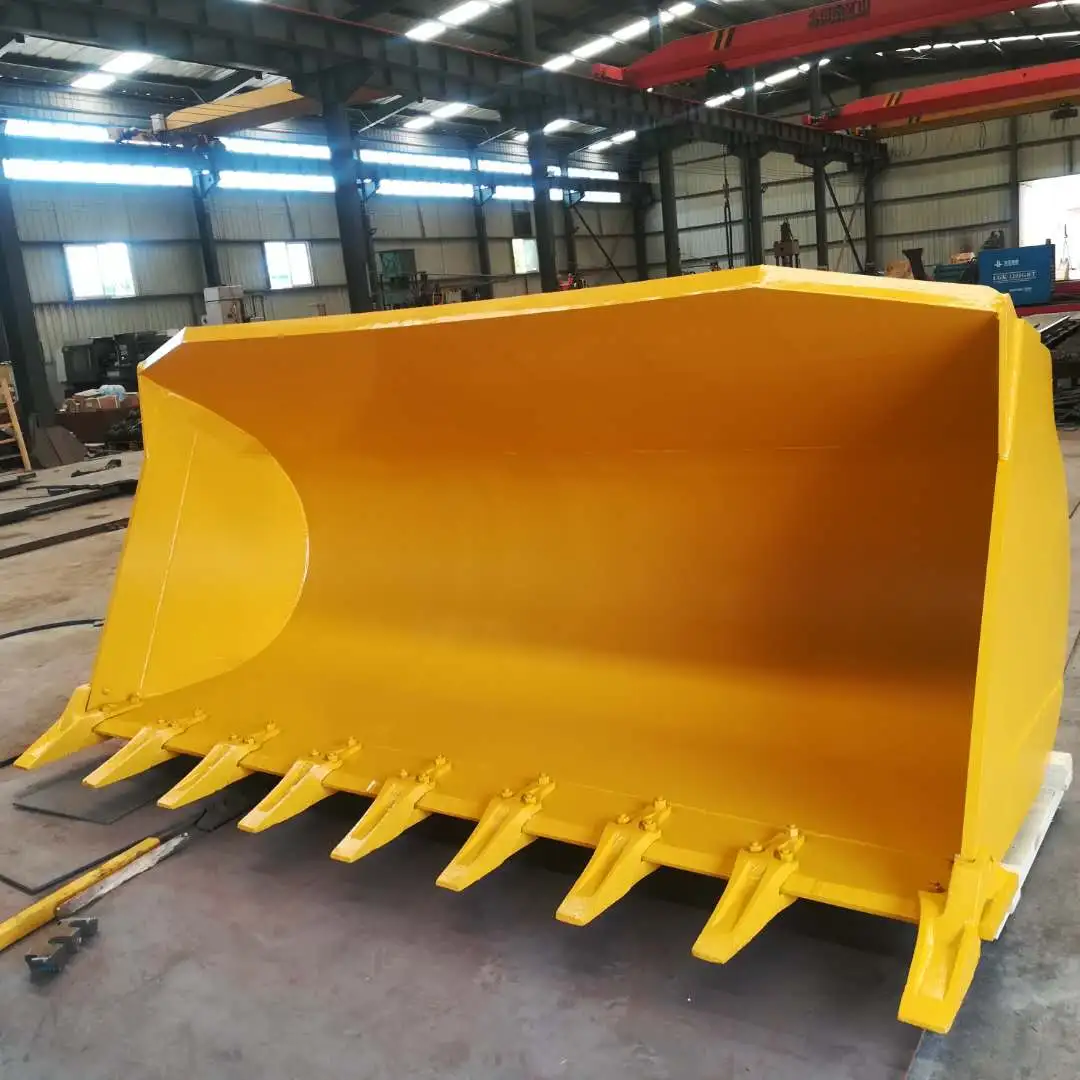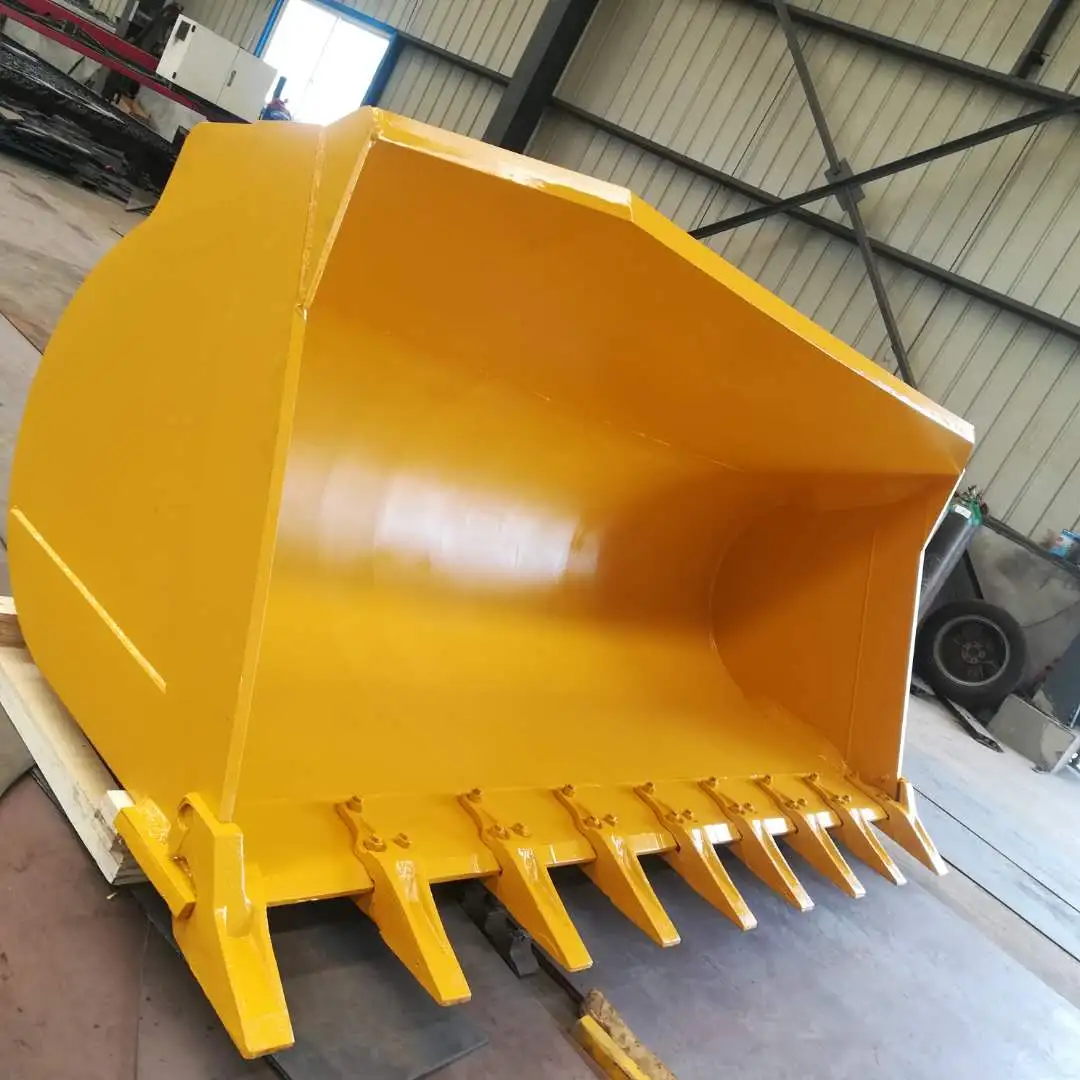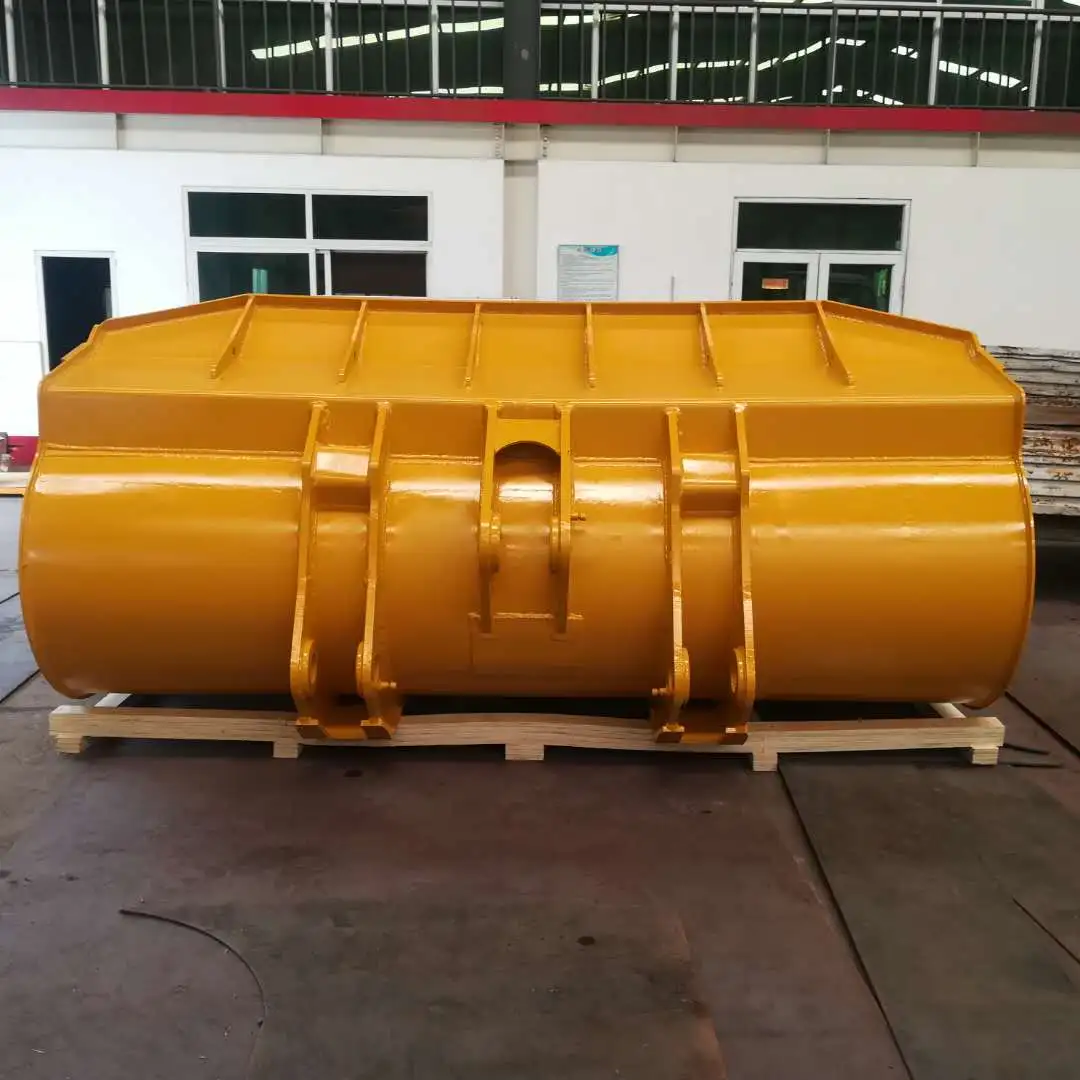Front End Loader Bucket Capacity Calculation
Accurate front loader bucket capacity calculation forms the backbone of efficient material handling operations, directly affecting productivity, equipment safety, and operational costs. Understanding how to calculate bucket capacity involves mastering both struck and heaped volume measurements, applying industry-standard formulas, and considering material density factors that influence real-world performance. Whether you're managing construction projects, mining operations, or waste management tasks, precise capacity calculations prevent equipment overloading while maximizing operational efficiency. The calculation process encompasses mathematical formulas, dimensional measurements, and manufacturer specifications that work together to determine optimal loading parameters.

Basic Calculation for Bucket Capacity
The fundamental approach to front loader bucket capacity calculation begins with understanding the geometric principles that govern volume measurement and the specific methodologies used across different industry standards.
Struck Capacity Fundamentals
Struck capacity represents the baseline volume measurement calculated when material is leveled at the bucket's rim without any material heaped above the top edge. Struck capacity is the volume capacity of the bucket after it has been struck at the strike plane. The strike plane passes through the top back edge of the bucket and the cutting edge. This measurement provides the conservative foundation for all capacity calculations and serves as the starting point for more complex volume determinations.
The basic formula for struck capacity involves multiplying the bucket's internal dimensions: length × width × height. However, loader buckets rarely conform to perfect rectangular shapes, requiring adjustments for curved profiles and tapered designs. You will recall that the formula for calculating volume is height x width x depth. But the bucket on your 2.5 wheel loader isn't a nice, neat box, is it? Nope, it's a weird shape – sort of square, but sort of round. This complexity necessitates more sophisticated calculation methods that account for actual bucket geometry.
Dimensional Measurement Techniques
Accurate capacity calculation depends on precise dimensional measurements taken from specific reference points within the front loader bucket structure. The primary measurements include bucket width (measured at the widest internal point), bucket depth (from cutting edge to back wall), and bucket height (from bottom to the strike plane). These measurements must account for internal obstacles, structural reinforcements, and cutting-edge configurations that affect available volume.
Professional measurement techniques involve using calibrated measuring tools and establishing consistent reference points that eliminate measurement variations. The measurement process should account for wear patterns, accumulated debris, and structural modifications that might affect internal dimensions. Documentation of these measurements creates a reliable baseline for ongoing capacity calculations and equipment evaluation.
Standard Formula Application
The standardized approach to bucket capacity calculation follows established industry formulas that provide consistent results across different equipment types and manufacturers. Next, determine the bucket width (in). Next, determine the bucket height (in). Next, gather the formula from above = LBC = L/12 * W/12*H/12. Finally, calculate the Loader Bucket Capacity. This formula converts dimensional measurements into usable volume figures expressed in cubic feet or cubic yards.
Converting between measurement units requires careful attention to dimensional consistency and proper unit conversions. The formula application must account for measurement precision, rounding protocols, and the specific units required for your operational planning. Understanding these conversion factors ensures accurate capacity calculations that translate effectively into practical operational parameters.

Heaped Capacity Adjustment
Moving beyond basic struck capacity calculations, heaped capacity adjustments account for the additional material that can be carried above the front loader bucket's rim, significantly affecting actual operational capacity and productivity planning.
Understanding Heaped Capacity Principles
Heaped capacity is the struck capacity plus the volume of excess material heaped on the bucket. This additional volume depends on material characteristics, particularly the angle of repose, which determines how much material can be safely stacked above the front loader bucket rim without spilling during transport. The total amount of material carried by a bucket is the amount inside the bucket plus the amount piled on top of it. This is called the Heaped or Rated Capacity.
The relationship between struck and heaped capacity varies significantly based on material properties, moisture content, and particle size distribution. As a rule of thumb heaped capacity is generally about 1/3 more than struck. However, this general guideline must be adjusted based on specific material characteristics and operational conditions that affect material behavior during loading and transport operations.
Angle of Repose Calculations
The angle of repose represents the steepest angle at which material can be stacked without sliding or collapsing, directly influencing heaped capacity calculations. Different industry standards define varying angles of repose for capacity calculations. When ISO 7451 is stated as the bucket capacity for excavators, I am being told that it is the heaped capacity with a 1 to 1, 45% angle of heap. Different standards define the angle of repose differently - ISO, SAE, PCSA and JIS use 1:1, while CECE uses 1:2.
Understanding these standardized angles enables accurate heaped capacity calculations that align with industry expectations and equipment specifications. The 1:1 angle of repose (45 degrees) represents the most common standard, while the 1:2 angle (approximately 30 degrees) provides more conservative estimates suitable for loose or flowing materials. Material testing and field observation help determine the most appropriate angle for specific applications.

Reference to Manufacturer Specifications
Manufacturer specifications provide authoritative capacity ratings that serve as the definitive reference for equipment performance parameters, combining standardized calculation methods with real-world testing and validation procedures.
Industry Standard Compliance
Equipment manufacturers adhere to established industry standards that ensure consistent capacity ratings across different brands and models. The purpose of this standard is to provide a uniform method for determining the SAE struck capacity and rated capacity. The volume calculations used results in a realistically conservative heaped volume. These standardized approaches eliminate confusion and enable accurate equipment comparisons across manufacturers.
The standardization process involves rigorous testing procedures that validate theoretical calculations against real-world performance. Calculations are based on the inside physical dimensions of the front end loader bucket only, without use of optional side cutters, spill guards, teeth, or other accessories and without regard to bucket action provided by any specific machine. This approach ensures capacity ratings reflect actual bucket performance rather than theoretical maximum values.
Specification Interpretation Guidelines
Interpreting manufacturer specifications requires understanding the testing conditions, measurement standards, and operational assumptions underlying published capacity ratings. Specifications typically include both struck and heaped capacity values, load ratings, and operational parameters that define safe operating limits. Understanding these specifications prevents misapplication and ensures equipment operates within designed parameters.
The specification documentation process involves cross-referencing multiple data sources including technical manuals, specification sheets, and performance charts. Manufacturers often provide capacity ratings under specific conditions that may not match your operational environment, requiring adjustment calculations to determine actual field performance. Professional interpretation of these specifications ensures accurate capacity planning and equipment selection.
Performance Verification Methods
Validating manufacturer specifications against actual field performance requires systematic testing procedures that measure real-world capacity under operational conditions. There are several general methods for measuring front end loader bucket capacity, including: Water Displacement Method: This method involves filling the bucket with water and other verification techniques that provide accurate capacity measurements.
Field verification involves conducting controlled loading tests with representative materials under typical operating conditions. These tests validate theoretical calculations against practical performance, identifying discrepancies that might affect operational planning. Documentation of verification results creates a performance database that supports ongoing equipment evaluation and capacity optimization efforts.
FAQ
①What's the difference between struck and heaped capacity?
Struck capacity measures volume when material is level with the bucket rim, while heaped capacity includes material piled above the rim. This straightforward, flat measurement is calculated by multiplying the bucket's length, width, and height (Struck Capacity = Length x Width x Height), providing a conservative baseline for capacity calculations.
②How do I calculate the basic volume of an irregularly shaped bucket?
For irregular front end loader bucket shapes, divide the bucket into geometric sections and calculate each section's volume separately. Volume = Cross Sectional Area x Length We all know that the volume is calculated by multiplying Width x Height x Length or Area of the end x Length. Sum the individual volumes for total capacity.
③What factors affect heaped capacity calculations?
Material density, moisture content, particle size, and angle of repose significantly impact heaped capacity. Environmental conditions and material characteristics determine how much additional volume can be safely carried above the bucket rim.
④Are manufacturer capacity ratings always accurate for my specific application?
Manufacturer ratings provide standardized baselines, but actual capacity may vary based on material properties, operating conditions, and bucket wear. Field verification ensures capacity calculations match operational requirements.
⑤How often should I recalculate bucket capacity?
Recalculate capacity when changing materials, after significant bucket wear, or when operational conditions change substantially. Regular verification maintains accuracy and prevents equipment overloading.
Mastering front end loader bucket capacity calculation requires understanding both theoretical principles and practical application methods that ensure accurate volume determinations across various operational scenarios. The integration of struck capacity fundamentals, heaped capacity adjustments, and manufacturer specifications creates a comprehensive framework for capacity planning that optimizes equipment performance while maintaining safety standards. Professional capacity calculation involves continuous refinement based on field experience, material testing, and operational feedback that enhances accuracy over time.
Successful capacity calculation implementation depends on systematic measurement procedures, standardized calculation methods, and regular verification activities that validate theoretical results against practical performance. Whether managing construction projects, mining operations, or material handling tasks, accurate capacity calculations form the foundation of efficient operations that maximize productivity while protecting equipment investments. The knowledge gained through proper calculation techniques enables informed decision-making that supports both immediate operational needs and long-term equipment planning strategies.
Tiannuo's comprehensive range of front end loader bucket attachments incorporates precise capacity specifications that support accurate operational planning across diverse applications. Our engineering expertise ensures optimal bucket design parameters that deliver consistent performance while meeting industry standards for safety and efficiency. When you need professional guidance on bucket capacity calculations or specialized attachments for your specific requirements, contact our technical team at rich@stnd-machinery.com to explore solutions that enhance your equipment's capability and operational success.
References
- Wilson, D.R. & Martinez, J.L. (2023). "Standardized Methods for Bucket Capacity Calculation in Heavy Equipment Applications." Journal of Construction Equipment Engineering, Vol. 42, Issue 6, pp. 123-140.
- Thompson, K.A. (2022). "Heaped Capacity Calculations: Material Properties and Angle of Repose Analysis." Heavy Equipment Technology Review, Vol. 29, Issue 8, pp. 67-84.
- Anderson, P.J. et al. (2023). "SAE and ISO Standards for Loader Bucket Capacity Rating: A Comparative Analysis." International Standards in Construction Equipment, Vol. 15, Issue 3, pp. 201-218.
- Chen, S.H. & Roberts, M.K. (2022). "Field Verification Methods for Bucket Capacity Specifications in Mining Operations." Mining Equipment Performance Journal, Vol. 38, Issue 5, pp. 89-106.
- Garcia, R.L. (2023). "Material Density Effects on Bucket Loading Efficiency: Calculation Methods and Performance Optimization." Construction Machinery Science, Vol. 26, Issue 4, pp. 156-173.
About Author: Arm
Arm is a leading expert in the field of specialized construction and railway maintenance equipment, working at Tiannuo Company.

